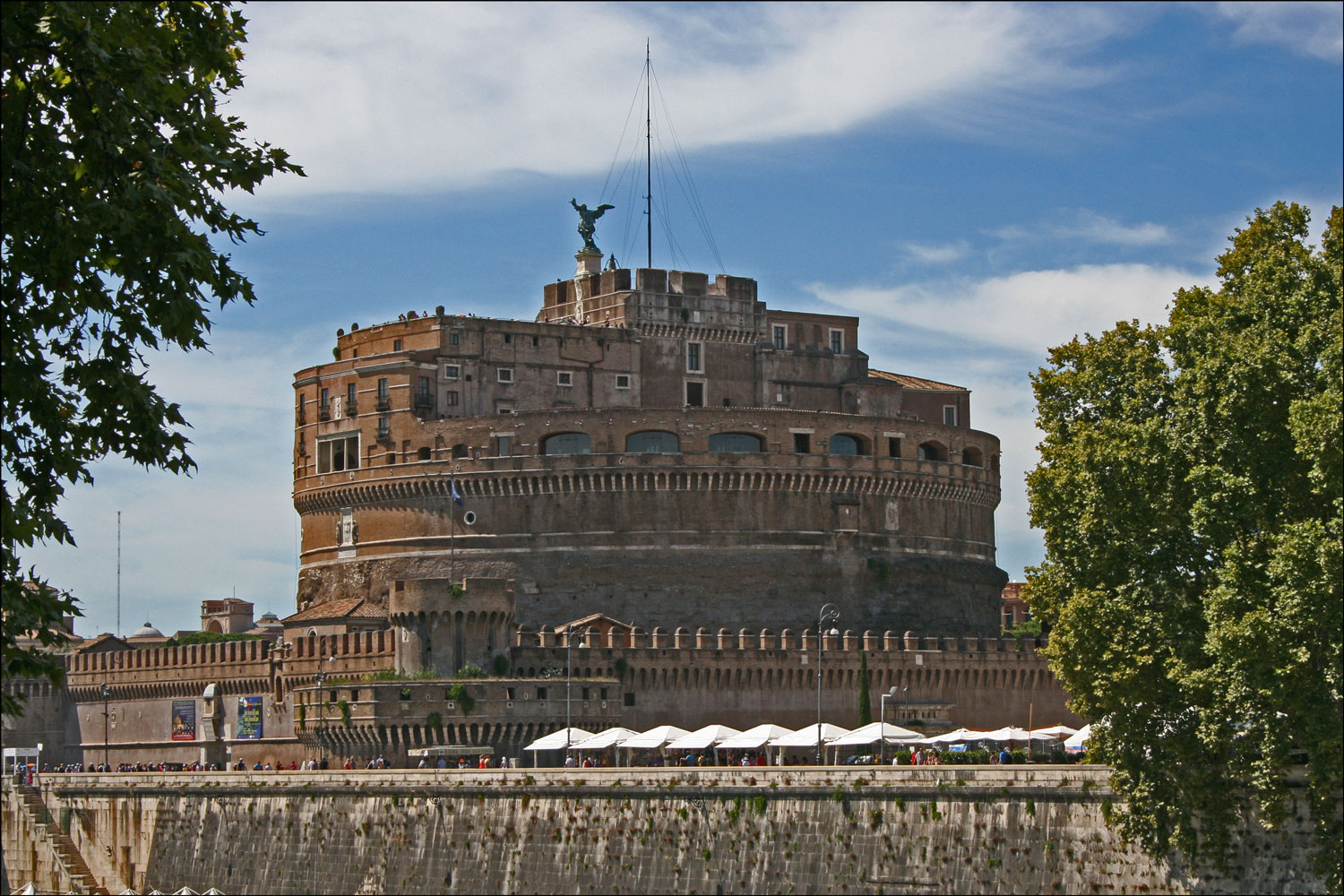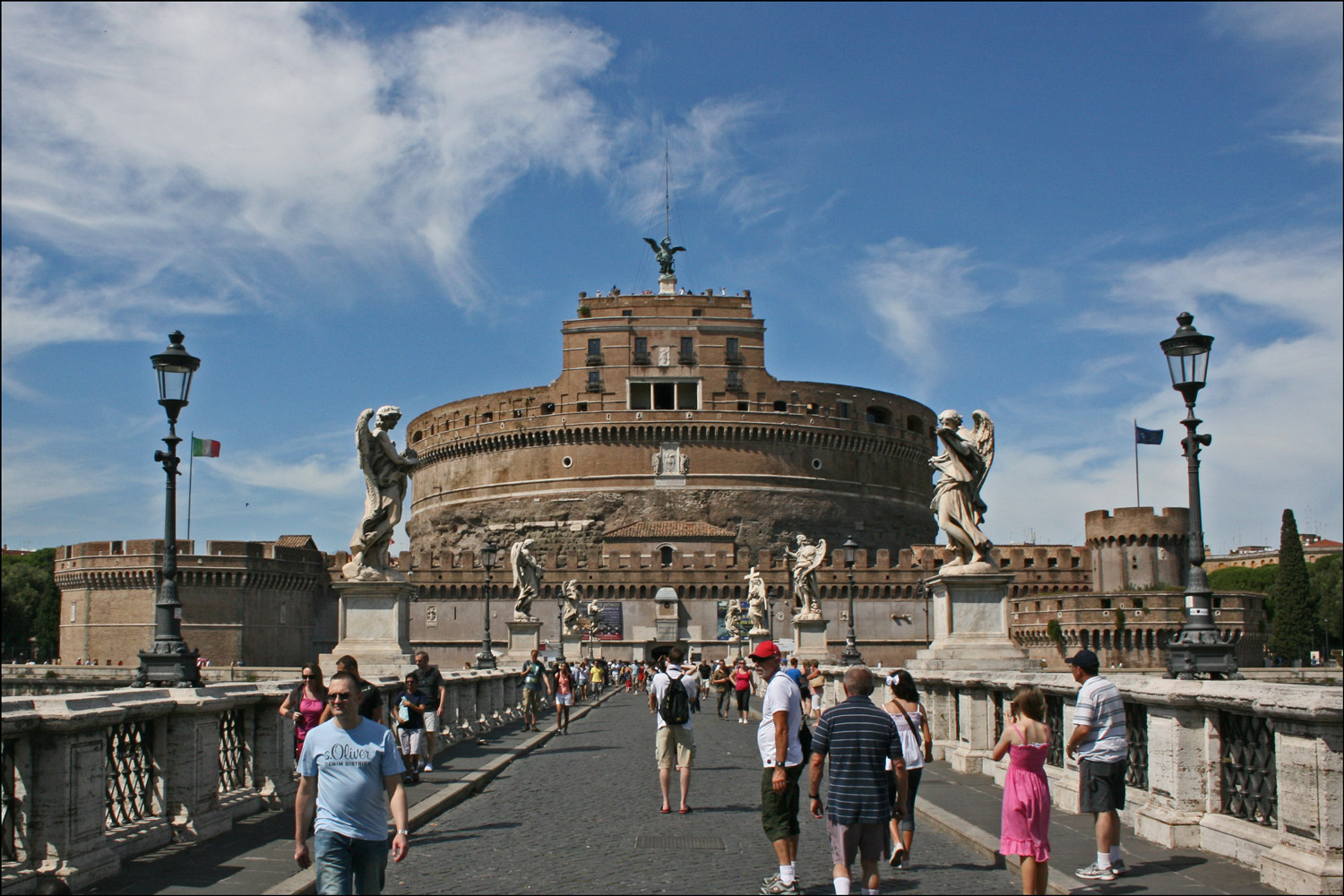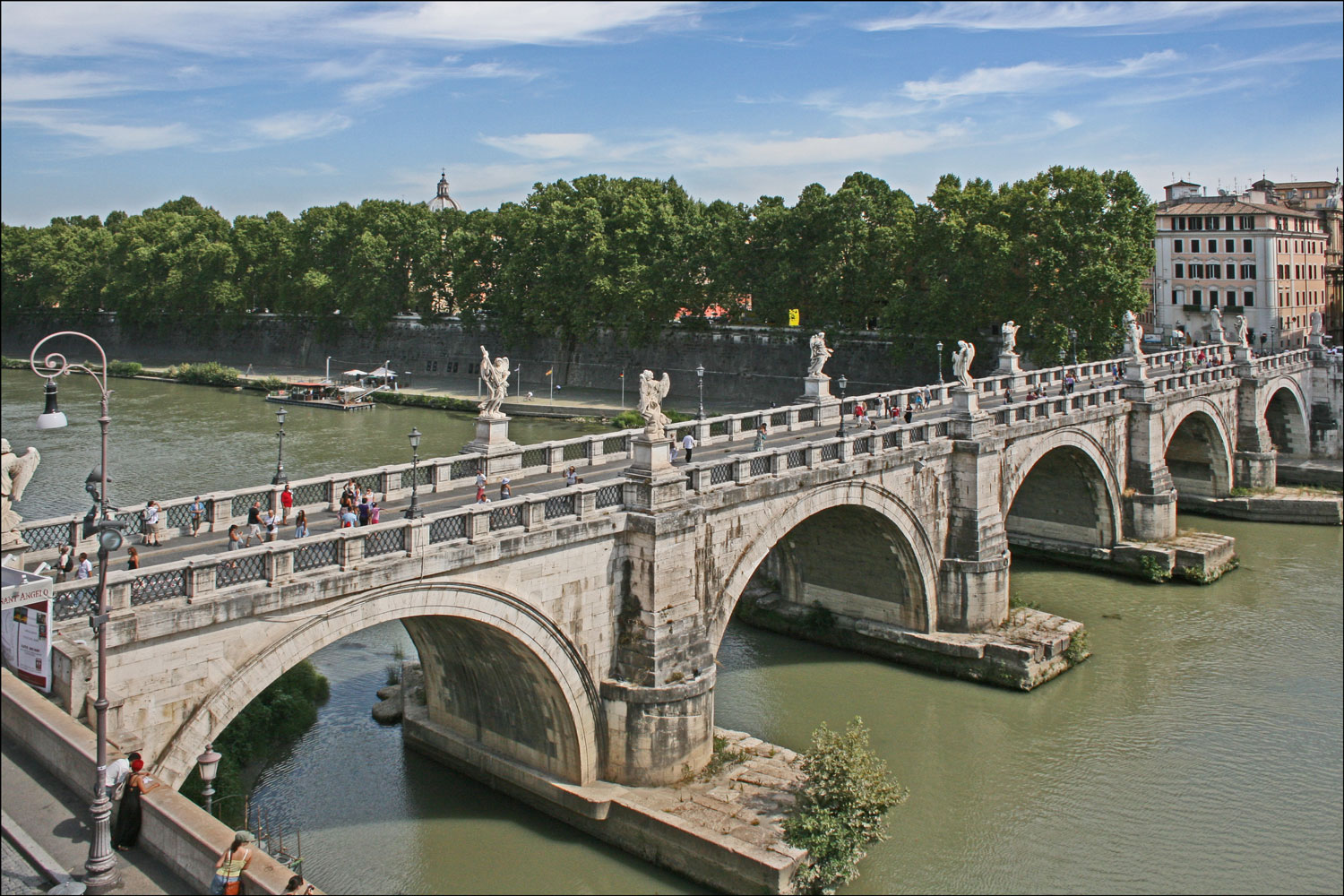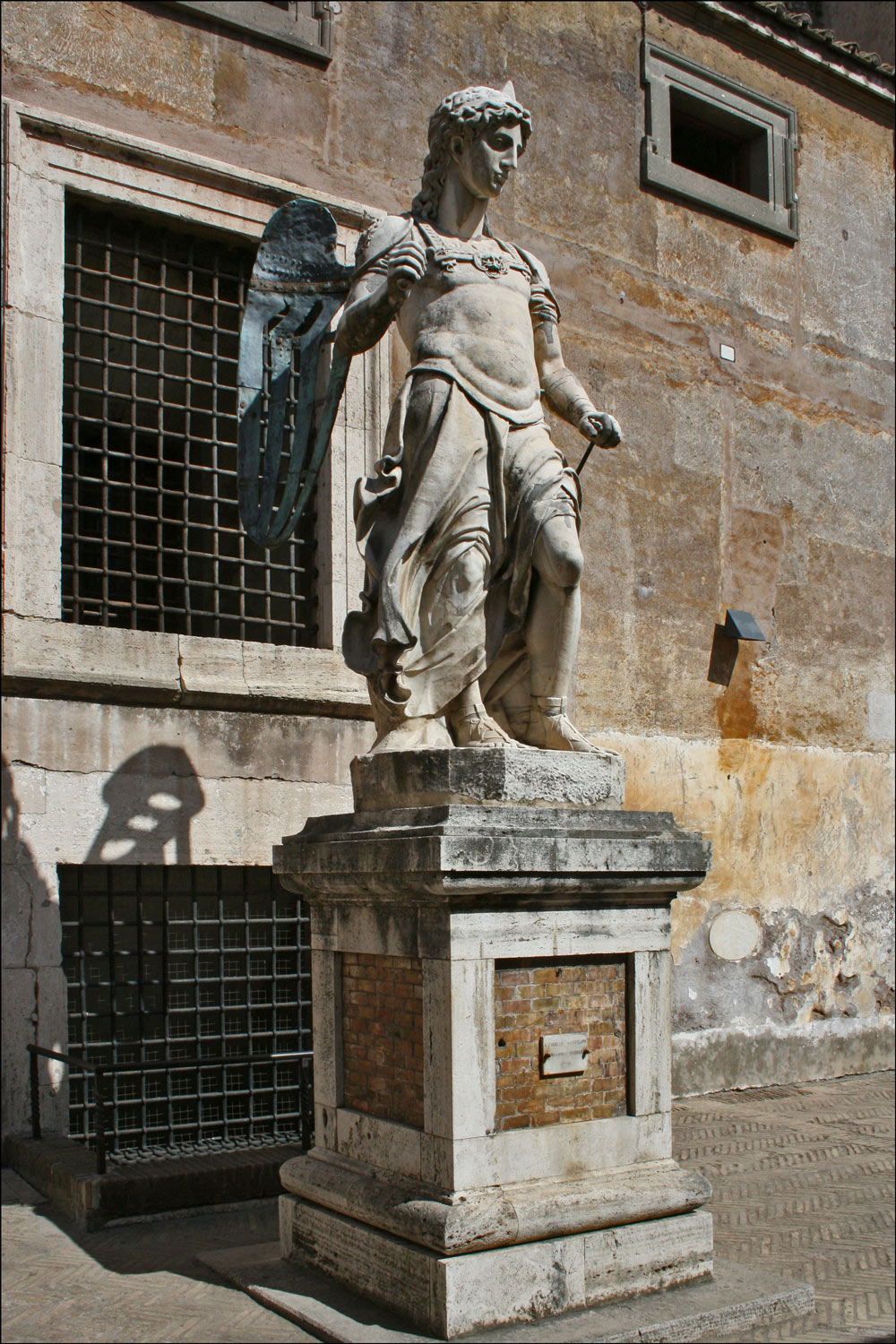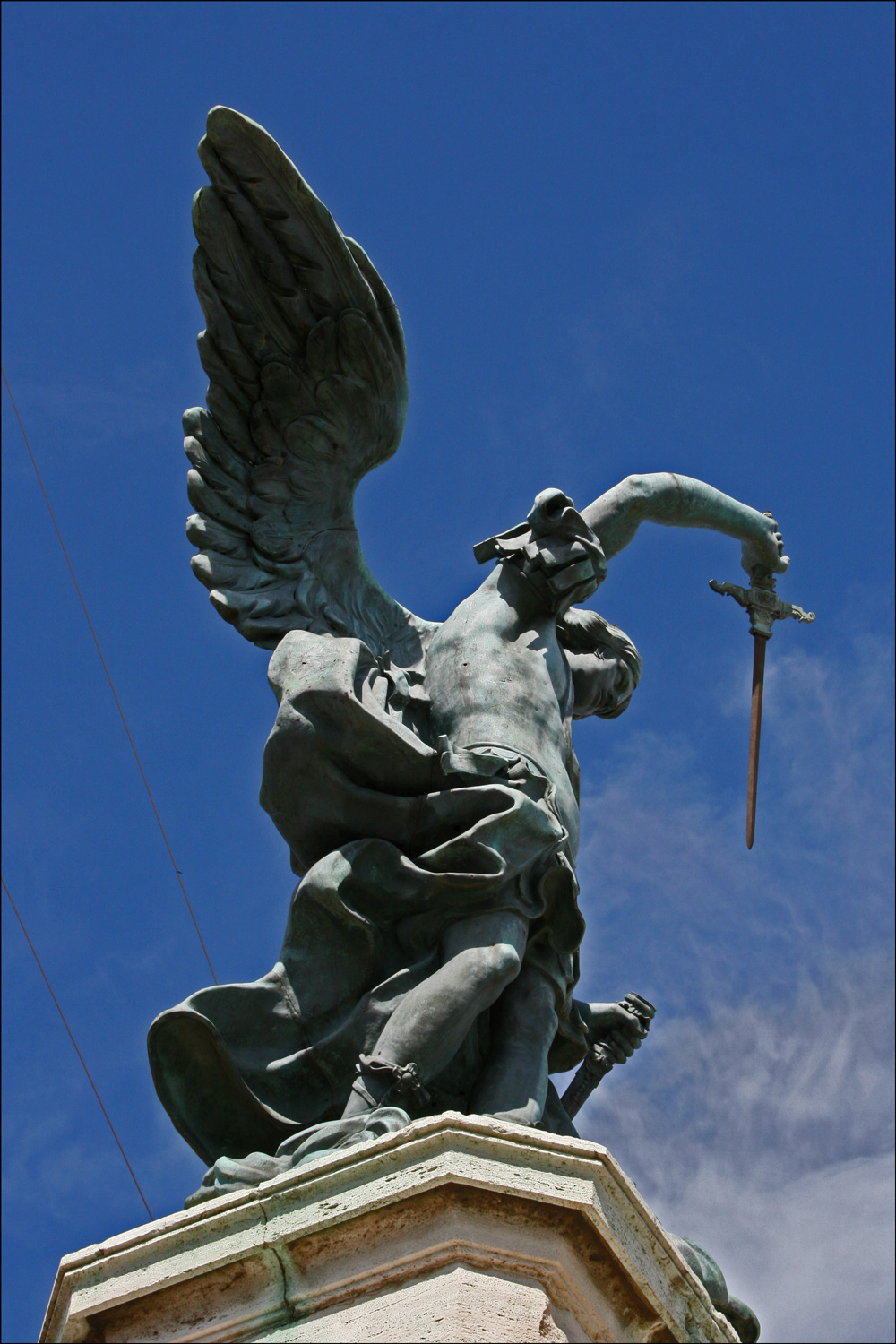Castel Sant’Angelo began its existence as a mausoleum for the Emperor Hadrian and his family. By the 14th century, Castel Sant’Angelo was conscripted by the popes for use as a fortress and a prison. Today, the structure is used as a museum.
Castel Sant’Angelo can be seen from a distance while walking along the banks of the Tiber. The Ponte Sant’Angelo leads from the left bank of the Tiber to the castle itself. The bridge is adorned with statues of St. Peter, St. Paul, and ten angels each holding one of the instruments of Christ’s passion and death.
According to legend, the Archangel Michael appeared with a sword on top of the mausoleum, signaling the end of the plague of 590 AD. Since that time, the mausoleum has been known as Castel Sant’Angelo (Castle of the Holy Angel). The statue of the Archangel Michael atop Castel Sant’Angelo has gone through six incarnations. The fifth version, by Italian sculptor Raffaello da Montelupo, is still on display inside the castle. The sixth statue, the one currently atop Castel Sant’Angelo, was created by Flemish sculptor Pieter Van Verschaffelt.
Castel Sant’Angelo from the Left Bank of the Tiber
SOURCE: Castel Sant’Angelo from the Left Bank of the Tiber (Rome, Lazio, Italy); photographed by Stephen J. Danko on 12 August 2011.
Castel Sant’Angelo from the Ponte Sant’Angelo
SOURCE: Castel Sant’Angelo from the Ponte Sant’Angelo (Rome, Lazio, Italy); photographed by Stephen J. Danko on 12 August 2011.
Ponte Sant’Angelo
SOURCE: Ponte Sant’Angelo (Rome, Lazio, Italy); photographed by Stephen J. Danko on 12 August 2011.
The Archangel Michael by Raffaello da Montelupo
SOURCE: The Archangel Michael by Raffaello da Montelupo (Rome, Lazio, Italy); photographed by Stephen J. Danko on 12 August 2011.
The Archangel Michael by Pieter Van Verschaffelt
SOURCE: The Archangel Michael by Pieter Van Verschaffelt (Rome, Lazio, Italy); photographed by Stephen J. Danko on 12 August 2011.
Copyright © 2011 by Stephen J. Danko

